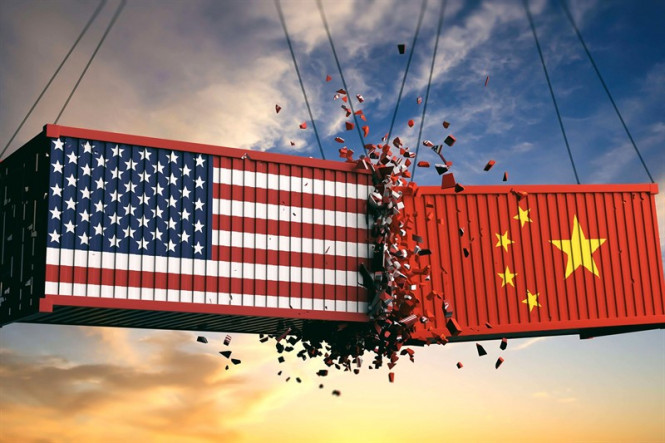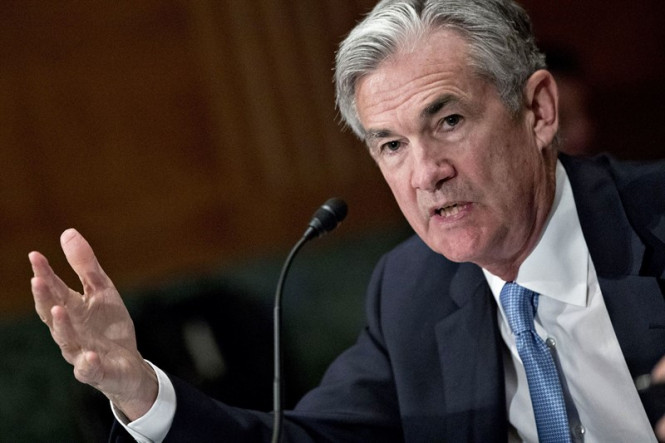
The markets are in expectant sentiment. Investors are waiting for a new round of high-level US-China trade negotiations to be held October 10-11, as well as the publication of the minutes of the September meetings of the Fed and the ECB.
Speaking at the meeting of the National Association of Business Economics (NABE) the day before, Fed Chairman Jerome Powell said the regulator is returning to buying assets. At the same time, the head of the American Central Bank noted that this should not be regarded as a new round of quantitative easing (QE): the Federal Reserve is only increasing its balance.
"As we pointed out in the March statement on the normalization of the Fed's balance sheet, there will come a time when we will begin to increase our portfolio of securities to maintain an appropriate level of reserves. This time has come." said J. Powell.
He emphasized that there was no question of large-scale asset purchase programs, similar to those that the Central Bank conducted three times between 2008 and 2014. According to the chairman of the Federal Reserve, this is not stimulating the American economy: it is already in good shape.
During QE, the Fed acquired long-term US government bonds in the secondary market. Now, the regulator intends to buy short-term bills which is necessary to restore balance in the monetary system.
Since the end of QE, the amount of bank reserves has decreased from $ 2.8 trillion to $ 1.4 trillion. The balance of the Federal Reserve began to decline rapidly since 2018 as part of the process of tightening monetary policy.
On the other hand, the shortage of dollar liquidity led to an increase in money market rates above 10%, and thanks only to the active use of US Central Bank repo transactions did they drop to less than 2%. It is assumed that regular purchase of bills will be a less costly way to stabilize the situation than repurchase operations. In this case, the balance of the Fed will grow. This is a "bearish" factor for greenbacks.
Thus, investors are still counting on a federal rate cut at the October FOMC meeting.

Recently, the head of the Federal Reserve, Jerome Powell, often recalls international risks and says that the regulator will act accordingly to support the growth of the US economy. It draws parallels with the 1990s, when the Central Bank carried out monetary expansion three times for preventive purposes.
The derivatives market estimates the chances of reducing the federal funds rate by 25 basis points at the next FOMC meeting at 84%. They increased after it became known that the base producer price index (PPI) in the US in September unexpectedly declined by 0.3% after increasing by 0.1% in August.
Due to this, Jerome Powell's announcement of the Fed's return to buy assets has diverted investor attention from the publication of the minutes of the September FOMC meeting. However, the Federal Reserve did not yet know about the negativity from business activity and producer prices; thus, the tone of the protocol will be rather hawkish, which will allow the EUR / USD bears to carry out another attack.
The main currency pair came up against strong resistance while trying to grow above 1.10.
It should be noted that this pair is quite strongly correlated with the general demand for risky assets. In 2017, it grew spectacularly, adding 16% in nine months, when the world enjoyed a simultaneous acceleration of global growth, and vice versa, pressure on EUR / USD strengthened amid an escalation of trade disputes. Last week, the pair slipped below 1.10 and remains at the lower boundary of the downward trading range.
Further postponement of the final trade agreement between the United States and China seems the most likely option as of now. However, in this case, the risk appetite may increase, and the euro may well be under increased pressure, as well as the currencies of developing countries. Following that, the whole question will arise whether politicians will be able to withstand the global cooling of business activity. In this regard, the EUR / USD pair has the prospect of returning to the area of 1.03-1.05, where it has found support since 2015, before the end of December.
If the markets are so impressed by the progress of the US-Chinese trade negotiations and there is hope for a decrease in tariffs and a reversal of world trade to growth, then EUR / USD can not only return to the upper boundary of the downward channel above 1.12 in the coming weeks, but also test the level of 1.14. Such a reversal also seems possible in the case of strengthening faith in the restoration of the European economy and accelerating inflation in the region, which will allow the ECB not to put so much pressure on the pedal of monetary impulse.
The material has been provided by InstaForex Company - www.instaforex.com